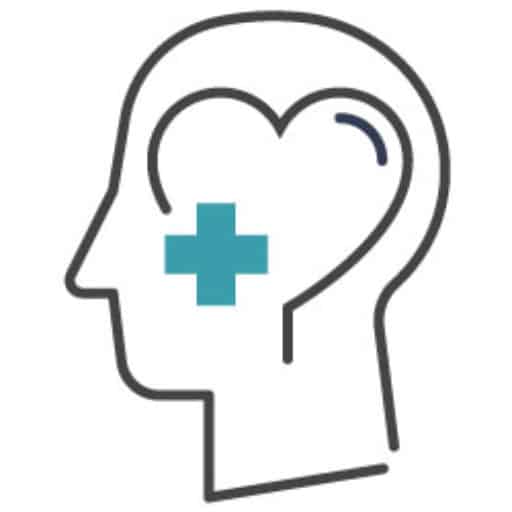It’s a common theme in movies: The main character is going about their daily activities and suddenly gets hit with a debilitating flashback that turns everything upside down. Hollywood makes these scenes intense and dramatic, but the reality is that traumatic flashbacks can result in a wide range of responses that aren’t necessarily so screen-worthy. However, flashbacks can impact your day-to-day life and present certain challenges that not everyone is ready for.
Understanding Traumatic Flashbacks
According to the American Psychiatric Association, about one in 11 Americans experiences post-traumatic stress disorder (PTSD) at some point in their life. PTSD can be related to trauma you experienced personally and traumatic events you witnessed—though there are even cases of secondhand PTSD. Common traumas that cause PTSD include military combat, sexual violence and physical abuse or assault.
PTSD is one of the many conditions that can cause a person to experience flashbacks. Someone who’s been through a traumatic event may experience involuntary episodes of vividly recalling or reliving the initial trauma.
A traumatic experience jolts the brain into activating the fight-or-flight response. Stress hormones prepare your body to fight, flee or freeze to increase your chances of survival. For many people, the brain returns to normal functioning after it interprets and consolidates the traumatic event into a stored memory.
For others, the brain doesn’t return to normal functioning. Instead, people with PTSD remain in survival mode because the brain doesn’t process a traumatic experience. The combination of stress hormones, dysfunctional areas of the brain and an imbalance of neurotransmitters creates intrusive symptoms of flashbacks and PTSD.
Flashbacks can develop months or years after the initial traumatic event, and their intensity can vary over time. You may experience more frequent flashbacks during times of stress or certain seasons.
Characteristics of Traumatic Flashbacks
Characteristics of flashbacks differ among individuals with PTSD. Some see partial or complete images of traumatic events in their minds, while others may smell, taste or hear certain elements of the traumatic event. A flashback may also be a pain sensation in an area of the body that was hurt during the trauma. Sexually abused children can experience flashback trauma by feeling intense pain around the genital area without seeing an image in their minds. A person traumatized by witnessing the homicide of a loved one may hear sounds resembling gunshots and become paralyzed with fear, unable to move or talk anytime they hear such a sound.
Flashbacks tend to begin with a feeling of disconnection from reality and a growing irrational fear of the event reoccurring. Some people experience tunnel or fuzzy vision at the start of a PTSD flashback.
The flashback itself may be vague or extremely vivid, and it can be multi-sensory. Sometimes sensations such as pain or pressure can be felt, in addition to seeing the events unfold. The past and present may blend together, or you may feel transported back to the time and place of the original trauma.
Where Flashbacks Come From
Several parts of the brain are involved in the generation of PTSD flashbacks. One is the amygdala, which moderates how your body responds to emotionally intense stimuli. For example, you’re walking in your neighborhood and a barking dog leaps out of the bushes. You believe the dog is dangerous to your survival, and your fear activates the amygdala. What follows is the classic adrenaline rush — racing heart, rapid breathing and the impulse to flee the danger. This is the amygdala’s way of increasing your chances of survival. Fortunately, the dog runs off, your fear subsides and you finish your walk.
Forgetting about the dog is an action that happens when the interplay between the amygdala and the hippocampus — a primary brain part involved in remembering and learning — is working properly. However, the hippocampus of people with PTSD doesn’t process and consolidate traumatic memories as it should. This suppression of the hippocampus is thought to be responsible for symptoms of flashbacks.
Flashbacks occur when something triggers the amygdala into “thinking” that a traumatic event could happen again at any moment. Since the hippocampus hasn’t stored traumatic memories in a way that prevents activation of the amygdala, flashback memories surface unexpectedly and frequently in people with PTSD. Research also indicates that some individuals who’ve been exposed to traumatic events continuously experience overstimulation of the amygdala and suppression of the hippocampus.
Implicit vs. Explicit PTSD Flashbacks
Flashbacks fall into at least two categories: They are either “implicit” or “explicit,” according to the research.
During explicit flashbacks, the person re-experiences everything that happened during the initial event. These flashbacks occur at a subconscious level.
During an implicit flashback, a person may feel all the emotions that occurred the first time but may not see or hear the events from the past. This can be confusing, since it may be unclear why these intense feelings are occurring. During an implicit flashback, you may feel a strong sense of sadness or dread. Fright, anger, and anxiety are other common emotional reactions that occur during a flashback.
Partial flashbacks are also possible. During a partial flashback, the experience is not all-consuming. The person may hear, smell or taste things from the initial event, but everything else around them remains unaffected.
Flashbacks resulting from trauma are not the same as memories. You can voluntarily bring up a memory or dismiss it from your mind. Flashbacks occur even when the person doesn’t want to think about the incident, and it can be difficult to break free once a flashback has begun.
Triggers for Traumatic Flashbacks
PTSD is unpredictable and most flashbacks happen unexpectedly, making it difficult to prepare for or anticipate them. In most cases, some type of environmental stimuli triggers symptoms of flashbacks in people with PTSD. An adult severely neglected as a child may have flashbacks of spending days alone locked in a closet whenever they’re by themselves. A teenager who suffered severe burns after his house caught on fire may have flashbacks whenever they smell something as minor as a match burning. Children living in war-torn countries may develop panic disorders when they hear horns blaring because it reminds them of air-raid sirens. Even something as simple as another person’s tone of voice can set off a flashback.
Impact on Mental and Emotional Well-being
Flashbacks can have a massive impact on a person’s mental and emotional health, leading to a range of other symptoms that may then worsen a person’s mental state. People with PTSD—and especially those who regularly experience traumatic flashbacks—will often avoid people or places that might bring back memories of the traumatic event that caused their issues. Sometimes, this avoidance behavior will happen completely subconsciously.
Individuals who have PTSD flashbacks will often have trouble sleeping, as well. PTSD causes anxiety, which can impact sleep schedules and lead to insomnia. Even should a person get to sleep, they may have nightmares that ruin their rest.
Some people will also experience some level of detachment or emotional numbness.
Coping Strategies for Managing Traumatic Flashbacks
Though flashbacks can be distressing, people can learn to manage them. This starts with recognizing that you are having a flashback and taking some steps to ground yourself and remind yourself that you are safe:
- Focus on something you know is real. Look around and try to identify things that you can see, hear, feel, smell or taste.
- If you can, find something in your surroundings that provides a strong sensation you can latch onto. Holding a hot beverage might let you focus your attention on the warmth on your hands and the sight of the steam rising from the mug. Listening to a favorite song might help you pull away from the flashback to focus on the lyrics or music.
- If you’re having trouble deciding what to focus on, try making lists of five things you can see, five things you can hear, and so on.
- Focus on your breath. Take long, deep breaths to help settle your physiological responses. This also increases the oxygen supply to your body, which can reduce anxiety and feelings of panic.
- If there is a place or a thing that you associate with comfort or safety, that may also help you re-center. If it is your bedroom, seek safety there; or, grab a cozy blanket or that treasured childhood toy.
Recognize When You Need Professional Help
While you may be able to deal with flashbacks on your own, severe PTSD flashbacks often indicate a need for professional help. An experienced mental health professional can advise you about available therapies and help you work toward regaining control of your life. Signs that you may want to seek help to deal with PTSD include:
- You experience flashbacks frequently or they continue to occur for many weeks, months or years.
- You have difficulty pulling yourself out of flashbacks when they happen.
- Flashbacks are affecting your everyday life and your relationships with others.
If you’re ready to start your recovery journey after a traumatic experience, contact us at Restore using the online form or call (866) 546-7284.



